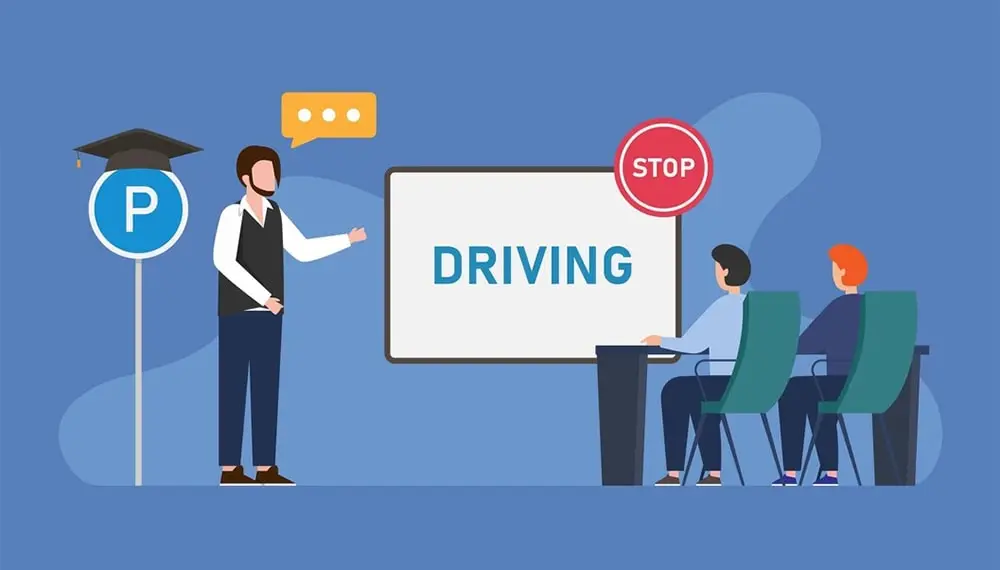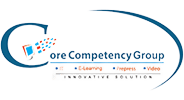Building a Winning Talent Acquisition Strategy
Rohit Kumar
24 Jun, 2024

In today's competitive job market, acquiring top talent has become critical to business success. Companies face unprecedented challenges in finding, hiring, and retaining the right people. A well-crafted talent acquisition strategy is essential to navigate this complex landscape.
This guide examines how to develop a successful talent acquisition strategy. By focusing on critical elements such as employer branding, sourcing, recruitment, and onboarding, businesses can build a robust framework for attracting high-quality candidates.
The following sections will explore the fundamental components of an effective talent acquisition strategy. We will share best practices and insights to help your organization secure the talent needed for long-term growth and success.
Talent Acquisition: An Overview
A talent acquisition strategy identifies, attracts, and retains top talent, which is more than filling open positions immediately. It focuses on long-term human resource planning and aligning talent with business objectives.
Unlike traditional recruitment, which typically addresses short-term hiring needs, talent acquisition encompasses a broader scope. It involves employer branding, sourcing strategies, recruitment marketing, and candidate experience management, which create a robust pipeline of qualified candidates.
A successful talent acquisition strategy comprises several key components:
-
Sourcing: Utilizing job boards, social media, and employee referrals to identify potential candidates
-
Attracting: Building a compelling employer brand that resonates with potential candidates and highlights the company’s values and culture
-
Recruiting: Engaging with candidates through a structured recruitment process that includes interviews, assessments, and background checks
-
Onboarding: Ensuring new hires are integrated smoothly into the organization with a well-defined onboarding program
-
Retaining: Implementing strategies to keep top talent engaged and motivated within the company
The importance of a strategic talent acquisition approach cannot be overstated. It is crucial in driving business growth and maintaining a competitive edge. Organizations can build a workforce that meets current needs and anticipates future challenges by focusing on long-term goals.
Effective talent acquisition requires collaboration across various departments. Human resources, marketing, and department leaders must work together to create and implement a cohesive strategy. This integrated approach ensures the organization attracts and retains the best talent available.
An effective talent acquisition strategy supports a business's growth and success by understanding and implementing these principles.
Aligning Talent Acquisition with Business Goals
Aligning talent acquisition with business goals ensures the organization attracts candidates that support and drive its strategic objectives. This alignment helps create a cohesive workforce that adapts and thrives in a dynamic environment.
The first step is understanding the company’s current and future business goals. The company’s growth strategy often outlines these goals, providing a roadmap for expanding roles or departments. Companies can proactively address talent needs by aligning talent acquisition with these goals.
Strategic workforce planning is crucial in this process. It involves forecasting future talent needs based on business growth projections and market trends. Workforce planning helps identify gaps in skills and prepare for potential challenges such as mass retirements or changes in industry demands.
A successful talent acquisition strategy must reflect the organization’s culture and values. Hiring individuals who align with these aspects ensures a more harmonious and productive work environment. Cultural fit is as important as a skill set in achieving long-term business success.
Key steps in aligning talent acquisition with business goals include:
-
Defining Business Objectives: Clearly outline what the organization aims to achieve in the short and long term
-
Workforce Analysis: Evaluate the current workforce to identify strengths, weaknesses, and improvement opportunities
-
Skill Gap Assessment: Determine the skills and competencies required to meet future business needs
-
Talent Forecasting: Predict future talent requirements based on business growth and market trends
-
Cultural Alignment: Ensure that hiring practices reflect the company’s culture and values
Monitoring and adjusting the talent acquisition strategy to align with evolving business goals is imperative. This continuous alignment helps maintain a workforce capable of meeting current and future challenges. Focusing on these aspects can build a resilient, agile team.
Building a Strong Employer Brand
Organizations must have a strong employer brand to attract and retain great employees. It communicates the company's values and culture and what makes it a desirable workplace. A compelling employer brand sets an organization apart in a competitive job market.
A well-defined Employer Value Proposition (EVP) is the foundation of a strong employer brand. The EVP should clearly articulate what the company offers its employees, including career development opportunities, work-life balance, and unique cultural aspects. This proposition should resonate with both current and prospective employees.
Another critical element is creating an engaging online presence. A well-designed careers page on the company’s website can showcase the company culture, highlight employee testimonials, and provide detailed information about available roles. An employer's brand can be effectively promoted on social channels such as YouTube, Instagram, LinkedIn, and X.
Involving current employees in branding efforts can significantly enhance authenticity. Employee testimonials, employer branding campaigns, and social media sharing can highlight a company's strengths. Encouraging employee advocacy helps build a genuine and relatable brand image.
Key activities to building a strong employer brand include:
-
Developing a Clear EVP: Articulate what sets the company apart and why it is a great place to work
-
Enhancing Online Presence: Use the company website and social media to showcase culture, values, and job opportunities
-
Leveraging Employee Advocacy: Encourage employees to share their experiences and promote the company
Attending industry events and networking can also bolster the employer's brand. Participating in conferences, job fairs, and community events allows the company to connect with potential candidates and demonstrate its commitment to industry leadership.
Employers can maintain a positive employer reputation by regularly monitoring and responding to online reviews. It demonstrates the company's commitment to continuous improvement by addressing positive and negative feedback.
A strong employer brand attracts high-quality candidates and fosters employee loyalty and engagement. Companies can attract and retain industry-leading talent by focusing on these elements.
Sourcing and Attracting Talent
Sourcing and attracting talent are critical steps in talent acquisition. Effective strategies in these areas ensure a steady pipeline of qualified candidates.
The first step in sourcing talent is identifying the best channels for finding potential candidates. Several channels can be used to reach candidates, including job boards, social media platforms, industry events, and employee referral programs.
Social media platforms allow companies to share company updates with potential candidates, post job openings, and engage with them. Job boards such as Indeed and Glassdoor also play a significant role in reaching active job seekers.
Enhancing talent-sourcing efforts by establishing relationships with educational institutions and professional associations is also possible. Partnering with universities for internships or entry-level positions helps create a pipeline of young talent, and engaging with professional associations allows access to industry-specific talent pools.
Good sourcing planning includes:
-
Utilizing Social Media: Actively engaging on platforms like LinkedIn and Twitter
-
Posting on Job Boards: Listing openings on sites like Indeed and Glassdoor
-
Employee Referrals: Encouraging current employees to refer potential candidates
Attracting talent requires more than just posting job openings. It involves creating a compelling message that highlights the benefits of working for the company. This includes showcasing the company culture, career development opportunities, and unique perks.
Recruitment marketing is an effective way to attract talent. It involves promoting the company’s brand and job openings through targeted campaigns, including email marketing, online ads, and content marketing strategies.
Networking at industry events and job fairs is another powerful method for attracting talent. Potential candidates can meet face-to-face at these events and discuss the benefits of working for the company.
Companies should consider direct outreach to attract passive candidates. That involves identifying potential candidates not actively looking for a job and contacting them with personalized messages.
Implementing this sourcing and attracting strategies can result in a strong pipeline of qualified candidates.
Effective Recruitment and Selection Process
An effective recruitment and selection process is vital for attracting and hiring the best candidates. This process ensures that the right talent is brought into the organization promptly and efficiently.
Precise and accurate job descriptions are the foundation of successful recruitment. These descriptions should outline the role's responsibilities, required skills, and qualifications. Well-crafted job descriptions attract suitable candidates and set clear expectations from the outset.
Applications are initially screened as part of the selection process. Candidates who meet the basic requirements are identified by reviewing resumes and cover letters. This process can be streamlined using an applicant tracking system (ATS) that sorts and organizes applications based on predefined factors.
Next, candidates are invited to interviews and assessments. The interview process should be structured and consistently followed to ensure fairness and objectivity. Behavioral and situational interview questions help evaluate a candidate’s past experiences and how they might handle future challenges.
Assessments include skills tests, personality evaluations, and technical exercises. Candidates are assessed in these assessments better to understand their abilities and suitability for the role. Selecting relevant assessments for the position and giving valuable insights is essential.
Critical steps in the recruitment and selection process include:
-
Screening Applications: Using an ATS to sort and review resumes
-
Conducting Interviews: Structured interviews to ensure consistency
-
Administering Assessments: Evaluating skills and personality fit
Checking references is a critical step that often provides additional insights into a candidate’s work history and performance. Contacting previous employers or colleagues can verify the information and uncover potential concerns.
After evaluating all candidates, the selection process concludes with a job offer. This offer should be clear and include all relevant details such as salary, benefits, and a start date. The onboarding process begins after the candidate accepts the offer.
Candidates need to have a positive recruitment and selection experience. Clear communication, timely feedback, and a respectful approach contribute to a positive impression of the company. Even candidates who are not selected should leave with a favorable view of the organization.
By following these steps, companies can ensure an effective recruitment and selection process that brings in high-quality talent to support their business goals.
Onboarding and Retaining Talent
Onboarding and retaining talent are crucial components of a successful talent acquisition strategy. Effective onboarding ensures that new hires integrate smoothly into the organization, while retention strategies keep them engaged and motivated over the long term.
The onboarding process should begin before the new hire's first day. Pre-onboarding activities can include sending welcome emails, providing an overview of the company culture, and sharing any necessary documentation. That helps new employees feel prepared and valued from the start.
On the first day, a structured onboarding program should be in place. This includes an orientation session introducing the company’s mission, values, and policies. New hires should also be introduced to their team members and given a workplace tour. A clear agenda for the first week can help new employees understand their immediate tasks and expectations.
A comprehensive onboarding program includes:
-
Pre-Onboarding: Welcome emails and documentation
-
First-Day Orientation: Introduction to company culture and policies
-
Initial Training: Clear agenda and task expectations
It is imperative to continue to train and develop employees. A company that provides opportunities for employees to grow is more likely to retain and motivate them. Regular training sessions, mentorship programs, and career development workshops can support this growth.
The key to employee retention is maintaining an open line of communication. Regular check-ins with managers, employee surveys, and feedback sessions can address concerns and improve job satisfaction. Recognizing and rewarding employee achievements also fosters a positive work environment.
Key retention activities include:
-
Ongoing Training: Regular training and development opportunities
-
Open Communication: Regular check-ins and feedback sessions
-
Recognition and Rewards: Acknowledging and rewarding achievements
Creating a supportive and inclusive work culture also significantly impacts retention. Encouraging collaboration, celebrating diversity, and promoting work-life balance can make employees feel valued and respected.
Organizations can build a loyal and productive workforce by focusing on effective onboarding and retention strategies. These efforts contribute to long-term success and create a positive environment where employees can thrive.
Measuring and Adapting Your Strategy
Measuring and adapting your talent acquisition strategy is essential for continuous improvement. Regular evaluation ensures that the strategy remains effective and aligns with organizational goals.
Measurement begins with identifying key performance indicators (KPIs). These metrics can provide insights into your talent acquisition processes. Common KPIs include time to fill, cost per hire, and quality of hire. By tracking these metrics, you can assess recruitment efficiency and effectiveness.
Time to fill measures the average number of days to fill an open position. This metric helps identify any delays in the recruitment process. A shorter time to fill often indicates a more efficient hiring process, while longer times may highlight areas needing improvement.
Cost per hire calculates the total expense involved in hiring a new employee. This includes advertising costs, recruiter fees, and onboarding expenses. Understanding this cost helps budget and optimize recruitment spending.
Quality of hire evaluates the performance and retention of new employees. This metric can be assessed through performance reviews, retention rates, and manager feedback. High-quality hires contribute positively to the organization, while low-quality hires may indicate issues in the recruitment process.
Key metrics to track include:
-
Time to Fill: Average days to fill a position
-
Cost per Hire: Total expense of hiring
-
Quality of Hire: Performance and retention of new hires
Monitoring these will allow you to make informed decisions and adjust your path forward based on trends and areas for improvement. Adapting your recruitment strategy by changing sourcing methods, improving job descriptions, or improving the candidate experience may be necessary.
Candidate and hiring manager feedback also provides qualitative insight into the recruitment process. Continuously measuring and adapting your talent acquisition strategy ensures it remains aligned with your organization's goals.
Developing a winning talent acquisition strategy is crucial for any organization aiming to secure top talent. By aligning talent acquisition with business goals, building a strong employer brand, and implementing effective sourcing methods, companies can attract high-quality candidates.
An efficient recruitment and selection process and comprehensive onboarding ensure new hires integrate smoothly and remain engaged. Regularly measuring key performance indicators and adapting the strategy based on feedback and data is essential for continuous improvement.
Focusing on these elements creates a robust talent acquisition framework that supports long-term success. Organizations can build a capable and motivated workforce by prioritizing strategic talent acquisition, driving growth, and achieving business objectives.
We are committed to helping you achieve your talent acquisition goals at Core Competency. Our comprehensive talent management solutions, learning and development software, and corporate training services are designed to support your organization at every step. Get started creating a winning strategy that attracts top talent and fosters their growth and retention within your company.




